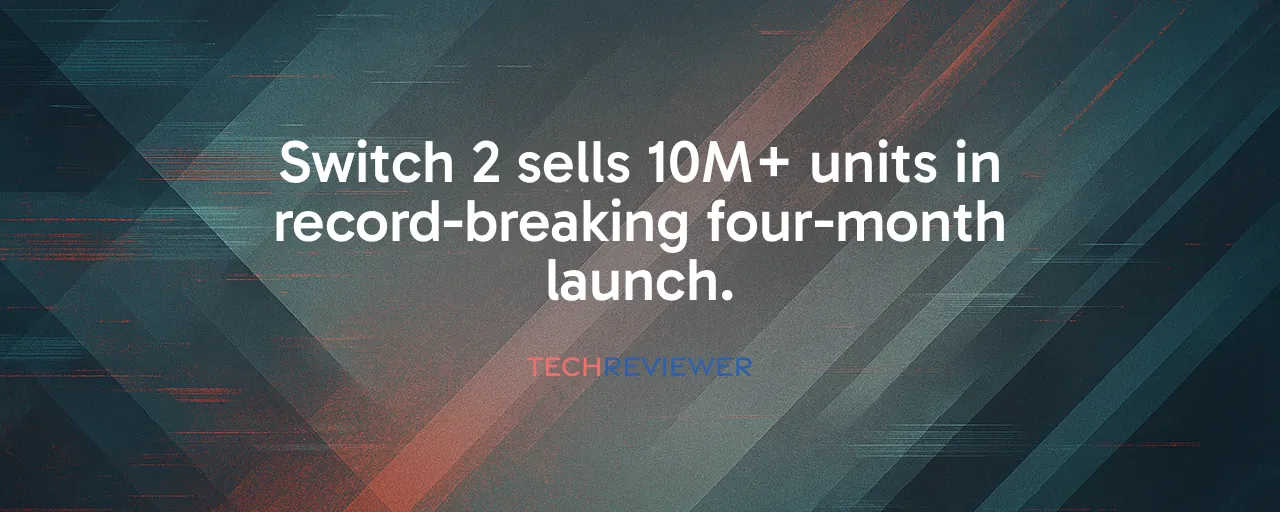A Record-Breaking Launch
Four months after its June 2025 debut, the Nintendo Switch 2 has sold 10.36 million units, shattering records for console launches. To put that in perspective, it took the PlayStation 5 eight months to hit 10 million, while the original Switch managed 4.7 million in the same timeframe. With 3.5 million units sold in its first four days alone, the Switch 2 has captured gamers’ attention worldwide, going on to sell 3.68 million units in the Americas, 2.40 million in Europe, 2.35 million in Japan, and 1.93 million in other regions over its first four months. This explosive start signals a shift in how we think about portable gaming, blending convenience with cutting-edge performance.
What’s driving this frenzy? Nintendo’s knack for understanding what players want: a device that works just as well on the couch as it does on a train. The hybrid design, a hallmark since the original Switch launched in 2017, continues to resonate. Add to that a beefy Nvidia Tegra T239 processor and 12GB of LPDDR5X RAM, and you’ve got a console that delivers 4K visuals when docked and crisp 1080p on its 7.9-inch LCD screen. It’s no surprise Nintendo upped its sales forecast from 15 million to 19 million units for the year.
Powering Up the Game Library
The Switch 2’s success isn’t just about hardware; its software lineup is a major draw. Mario Kart World has sold 9.57 million copies, proving Nintendo’s first-party titles remain a powerhouse. Meanwhile, Donkey Kong Bananza moved 3.49 million units, showing there’s plenty of love for new franchises too. But the real surprise came with Cyberpunk 2077: Ultimate Edition. Once thought too demanding for Nintendo’s hardware, this port leverages the Switch 2’s DLSS and ray-tracing tech to deliver stunning visuals and smooth performance, a feat that’s turning heads among developers and players alike.
Then there’s Pokemon Legends: Z-A, a cross-generation title that shines on the Switch 2. Fans have raved about its stable 60fps performance and enhanced visuals compared to the original Switch’s choppy 30fps in busy scenes. These case studies highlight a key lesson: the Switch 2’s upgraded specs make it easier for developers to bring ambitious games to a portable platform, opening doors for more complex titles. Yet, some third-party developers grumble about limited access to development kits, which could slow the influx of big-name games.
Navigating Challenges and Opportunities
Despite its runaway success, the Switch 2 faces hurdles. Some gamers balk at the higher price point compared to the original Switch, especially budget-conscious players or parents buying for kids. Others, happy with their existing Switch and its vast game library, see no rush to upgrade. Retailers like Best Buy and Amazon have struggled to keep units in stock, with supply chain hiccups causing frustration during peak demand. And while backward compatibility lets players carry over their digital libraries, the Switch 2’s MicroSD Express cards aren’t compatible with older formats, which might annoy some users.
Still, the holiday season looms large. With Black Friday, Cyber Monday, and Christmas 2025 on the horizon, analysts predict sales could climb to 12-14 million units by year’s end. Upcoming releases like Pokemon Legends: Z-A and Metroid Prime 4: Beyond will likely fuel demand, especially among loyal fans. Nintendo’s challenge is clear: keep the supply chain steady and convince third-party studios to jump on board. If they do, the Switch 2 could cement its place as the go-to console for portable gaming.
A New Standard for Gaming’s Future
The Switch 2’s rapid rise sends a message to Sony and Microsoft: portable gaming isn’t a niche, it’s a powerhouse. With 27 percent of the console market share, Nintendo is nipping at PlayStation’s heels. The hybrid model, refined over eight years since the original Switch, offers flexibility that stationary consoles can’t match. Players love the improved Joy-Con design, which swaps flimsy rails for magnetic attachments, fixing the dreaded stick drift that plagued its predecessor. Add in faster load times and a 256GB storage boost, and it’s clear why gamers are hooked.
Looking ahead, the Switch 2’s success could push competitors to rethink their strategies. Will Sony or Microsoft pivot toward hybrid designs? For now, Nintendo’s focus on accessibility—think button remapping and colorblind modes—keeps it ahead of the curve. The console’s ability to run enhanced versions of older titles, like The Legend of Zelda: Tears of the Kingdom, ensures players don’t feel left behind. As developers get more comfortable with the hardware, expect a wave of innovative games that could redefine what portable consoles can do.
